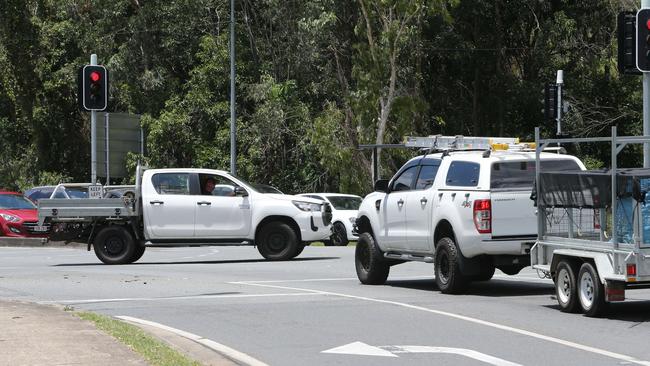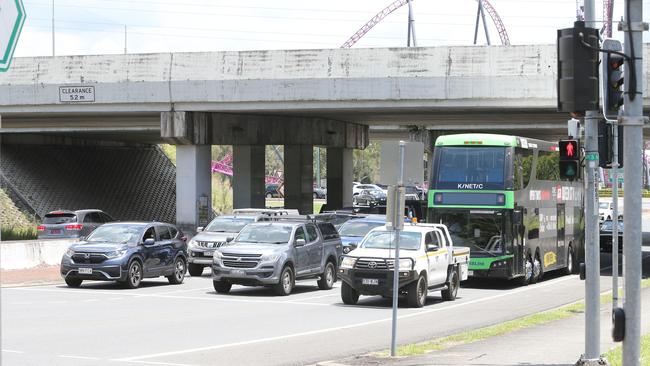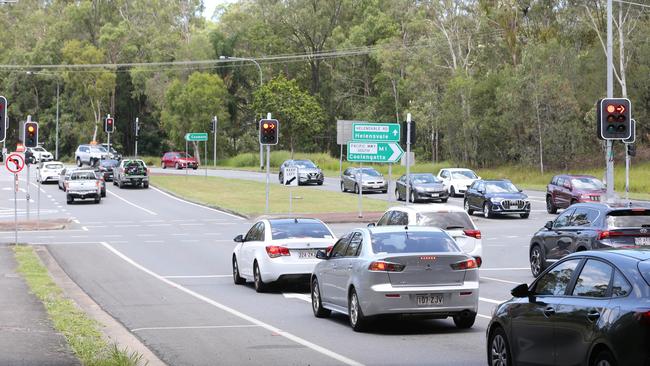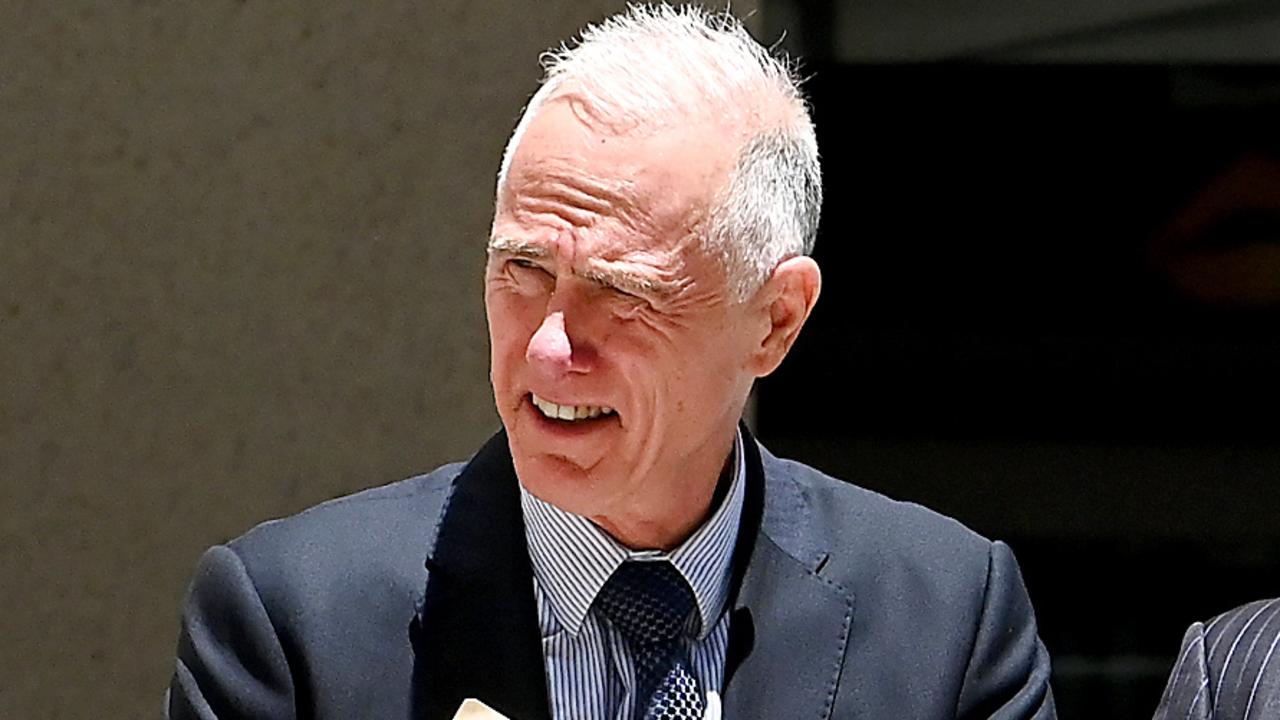Gold Coast traffic data reveals city’s worst gridlock as development squeezes suburbs
Developers should not be made to pay more to build on the Gold Coast, the industry’s peak body has warned, as the city continues to be squeezed by a growing population FIND OUT WHY

Gold Coast
Don't miss out on the headlines from Gold Coast. Followed categories will be added to My News.
NO new significant housing developments are likely to be approved and built in the fast-growing city because the Gold Coast City Council says it’s unaffordable.
The city has less than two years of available greenfield development space left, a population increasing by 15,000 annually and a development industry unable to built enough houses or units to keep up.
While the council is investigating western suburbs of Gaven North and Highland Park as growth areas, planning boss Cr Cameron Caldwell says more is needed but council can’t afford to do it unless something big changes.
“New greenfield development opportunities need to be environmentally and economically responsible and council could not pursue large-scale greenfield land release without significant financial and planning support from the state government,” he said.

“Our approach to planning for growth has been to encourage infill development, to maintain a compact urban form, and protect the green behind the gold by ensuring development predominantly occurs in already urbanised areas.
“Residents need to be located near infrastructure, employment and amenity to enjoy the true Gold Coast life.
“Our financial capacity to deliver growth-related infrastructure is directly impacted by our ability to recover developer contributions in a framework determined by the state government.”
The council last year revealed it had identified a pair of western suburbs – Highland Park and Gaven North – for potential development which would allow hundreds of new homes to be built.

However, these sites are largely already serviced by existing infrastructure.
Experts have tipped any development would focus on high-density townhouses to accommodate the city’s growing population, expected to top one million people by 2041.
The state government insists it’s working closely with the council to manage the city’s growth, pointing to more than $1.5bn given to local governments for infrastructure delivery.
A spokeswoman for Deputy Premier Steven Miles said the government was committed to working “with councils and industry to understand where housing is most needed and to plan to meet that need, including through collaboration on ongoing improvements to the Growth Monitoring program and identifying priorities for an update of the SEQ Regional Plan”.

“The current infrastructure framework includes a cap on the financial contributions a local government can levy on a development, to limit the impacts on housing affordability,” he said.
“As our population grows rapidly, it is imperative that this growth is managed appropriately, with planning in place for the long term.
“The Gold Coast City Council alone has been allocated more than $25m to help deliver nine projects which have created or supported more than 370 local jobs so far.”
However, Kirsty Chessher-Brown, the CEO of the Urban Development Institute of Australia (UDIA) - the development industry’s peak body - said Gold Coasters were already pouring enough money into the economy through infrastructure charges.
“New home buyers on the Gold Coast have paid large sums for new infrastructure for the community, via ‘developer contributions’ aka infrastructure charges which is the amount per lot council charges new residents to build new roads, parks, and other infrastructure,” she said.

“In the past five years, the amount of money new residents have prepaid council for new infrastructure has totalled around $700 million in infrastructure charges being paid by developers. This is off the back of around 26,302 new dwellings approved.
“Additionally $8,661,336 in trunk infrastructure items have been provided in 2020-21 financial year alone on the Gold Coast.
“New homebuyer fees and charges are not the only contribution to the Gold Coast community and economy, with the development industry making a significant local economic contribution annually, including: $7.9m to the gross regional product, $1.9m in wages and salaries and 11.4 per cent of direct regional employment.”
The city’s housing crisis has only worsened as the rate of tower development on the coastal spine slows on the back of skyrocketing construction costs. It has sparked predictions that one in five high-rises currently before council will never be built.
The bulk of the city’s remaining housing stock is in the northern suburbs of Coomera and Pimpama, as well as the giant $1.5bn Skyridge estate at Worongary which will ultimately be home to 10,000 people.
However, Skyridge, which is under construction, will take 15 years to deliver.
Significant land stocks remain at Norwell in the city's far north but development of the cane fields has been ruled out by the state government, despite support from locals keen to sell.
REVEALED: Gold Coast’s worst traffic gridlock hot spots
The city’s worst growing gridlock is on hinterland roads feeding into the M1 with traffic almost doubling in the past seven years, according to new data.
Some council roads are recording average daily counts of more than 30,000 vehicles.
This has sparked safety concerns and a call for more funding from the State Government.
MPs are meeting with councillors to crunch the new data and believe the traffic congestion is being caused by the Coast’s “affordability crisis”.
They say workers are forced to find cheaper home rentals in the hinterland either cross the M1 from the west for their job each day, or drop their children at larger Coast schools.
Tradies on the Coast are heading west to the new estates at Canungra or near Beaudesert.

Theodore MP Mark Boothman obtained data through a Question on Notice in State Parliament to Transport Minister Mark Bailey. He began examining the trends in his northern electorate.
“There are more people going across the mountains heading west to those (new) residential areas than ever before,” Mr Boothman said.
“Are they tradies heading out to work (in Canungra and Beaudesert) — yes, there are some of them. But also there would be people from those areas working on the Gold Coast because they can’t afford to buy a house on the Coast.
“They are driving longer, paying more fuel costs, there’s more wear and tear (on the roads). My concern is they are actually going down those council roads which are not designed for that traffic.

“Then council has to pay the cost of repairing the roads. The problem will continue to fester unless somebody takes some action to properly plan and build suitable roads that will cater for this population boom.”
Since 2015 the data shows average traffic volumes have had:
* a 38.69 per cent increase along a section of Tamborine-Nerang Road east of Landman Court.
* a 37.69 per cent increase on Maudsland Road between Cobb Co Drive and Tamborine-Oxenford Road.
* a 29.25 per cent increase on the Beaudesert-Nerang Road near the FG Walker Bridge.
* only a 9.63 per cent increase at Hope Island Road but vehicle movements have reached 30,878.
* a less than three per cent increase on the Beaudesert Road near Mooyumbin Creek where vehicle moments have reached 24,406.
The data also shows odd trends at some locations where traffic counts have decreased around M1 exit upgrades as motorists avoid the area then choose to rat-run suburban streets.
At Oxenford, motorists have avoided Exit 57 as the Transport Department worked on an upgrade now completed.

“The reason why I’m looking into these numbers is the State actually has a responsibility if they are pushing cars onto local council road networks because of poor planning and infrastructure by the State,” Mr Boothman said.
“You see this with Exit 57. It’s obvious people don’t seem to want to use it. They’d rather use other alternatives in the area. I see that on a daily basis. I can see the amount of cars turning right into Michigan Drive (to avoid going near the Exit interchange).”
Mr Boothman said he was concerned about the impact of the Coomera Connector once it was built feeding traffic into link roads like Helensvale Road.
“I do feel the State should pay for the vast majority of the cost on it. We are dumping traffic on a council-controlled road. That’s not fair,” Mr Boothman said.
“People don’t realise the impact this will have on Helensvale Road. All those residents are not going to be happy five, 10 years down the track. The Coomera Connector will double the amount.”

The council’s State of the Transport report released in November last year showed more than half of the increase in traffic volumes occurred in the north. Stanmore Road at Yatala had an annual increase in average traffic volume of 10 per cent.
Motorists used minor roads to avoid M1 projects like the Varsity Lakes to Tugun upgrade, council officer said.
Hinterland-based councillor Peter Young met with Mr Boothman to discuss the data and intends to ask council officers to review City research.
“I’m hoping to get some further clarification. I will have the officers test that data against ours,” he said.


